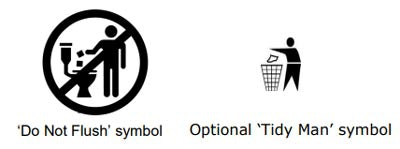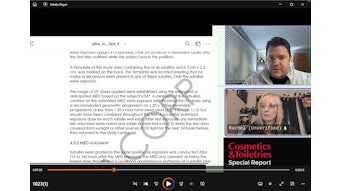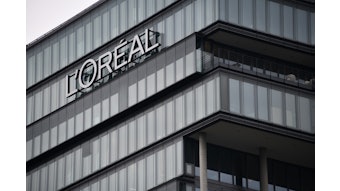
All disposable wipes are not created equally. Some are suitable to flush away. Others are incompatible with wastewater infrastructure. For this reason, lawmakers in Washington state have passed legislation requiring new labeling for nonflushable wipes.
As outlined in the bill, disposable wipes are convenient for uses ranging from baby care and hand washing, to personal cleansing, makeup removal, sunscreen application, household cleaning and more. Disposable wipes are typically made from materials such as polyester, polypropylene, cotton, wood pulp or rayon fibers, and formed into sheets. These are typically moistened with water and other ingredients, such as cleansing and moisturizing agents, depending on their intended use.
Wipes may also be intended for therapeutic use, i.e., for treating acne, and as such, fall under the U.S. Food and Drug Administrations' (FDA's) oversight for drugs. They may also contain ingredients, e.g., preservatives, to prevent the growth of bacteria or mold.
Disposal Assessment
In 2018, the latest edition of guidelines were published by the Association of the Nonwoven Fabrics Industry (INDA) and Edana, a global association of nonwovens and related industries, to determine the flushability of disposable nonwoven products. These include clearance tests for drains and pumps, settling and biosintegration tests, and more. Only those products that pass these tests are deemed as flushable.
Nonflushable Label Requirements
For wipes that do not pass the disposable tests, under the new law, they must clearly and conspicuously be labeled with the phrase "Do Not Flush" as follows.
- Use the "Do Not Flush" symbol (see below) described in the Guidelines for Assessing the Flushability of Disposable Nonwoven Products, Edition 4, published May 2018.
- The size of the symbol must cover at least 2% of the surface area of the side of the package on which the logo is presented.
- The product must place the symbol in a prominent and reasonably visible location on the package that, in the case of packaging intended to dispense individual wipes, is permanently affixed in a location that is visible near the point where individual wipes are dispensed.
- Ensure the symbol is not obscured by packaging seams, folds or other package design elements.
- Ensure the symbol has sufficiently high contrast with the background of the packaging to be highly readable.
 Penalties
PenaltiesThese requirements take effect for most products as of July 1, 2022. For products required to be registered by the U.S. Environmental Protection Agency under the Federal Insecticide, Fungicide and Rodenticide Act, these requirements take effect July 1, 2023.
Finally, according to an analysis overview of the bill, an enforcing government entity may impose a civil penalty in the amount of up to $2,000 for the first violation; up to $5,000 for the second violation; and up to $10,000 for the third and any subsequent violation.
According to a report by the Nonwovens Industry, Washington Representative Joe Fitzgibbon inked the bill into law on March 26, 2020.
"I introduced this legislation in response to concerns voiced by Washington sewer system operators that consumers are flushing certain categories of wipes that are not intended to be," said Fitzgibbon, in the report. "I was pleased to sponsor legislation that brought together municipalities and industry to find a common sense solution to this problem and am proud that Washington is the first state in the nation to tackle this issue in a meaningful way."
For more information, see House Bill 2565.










